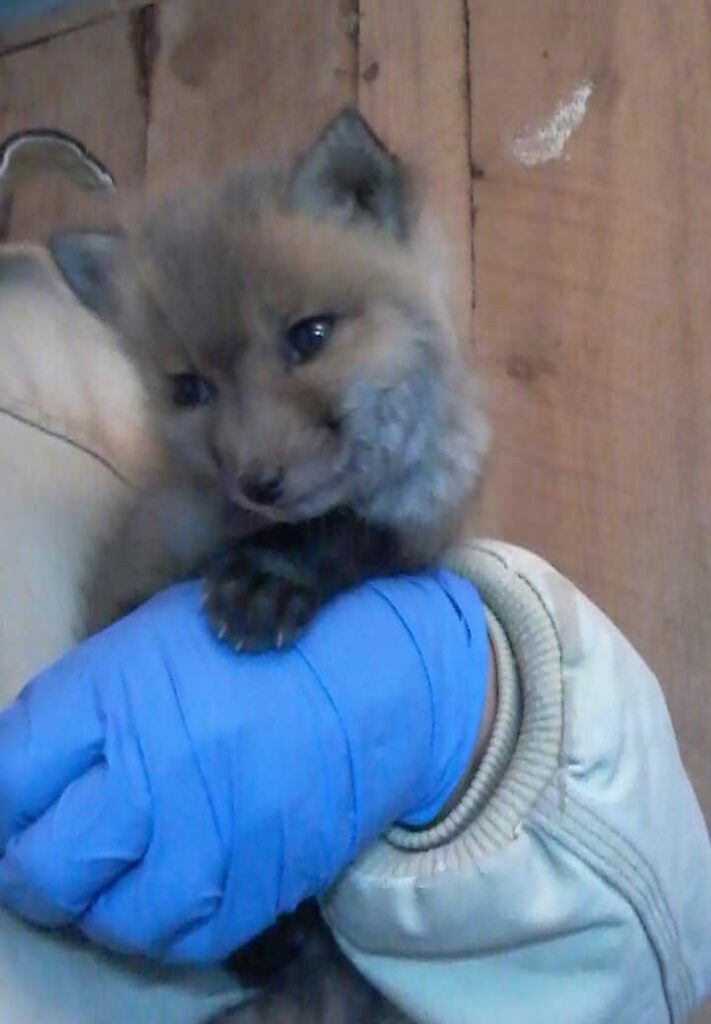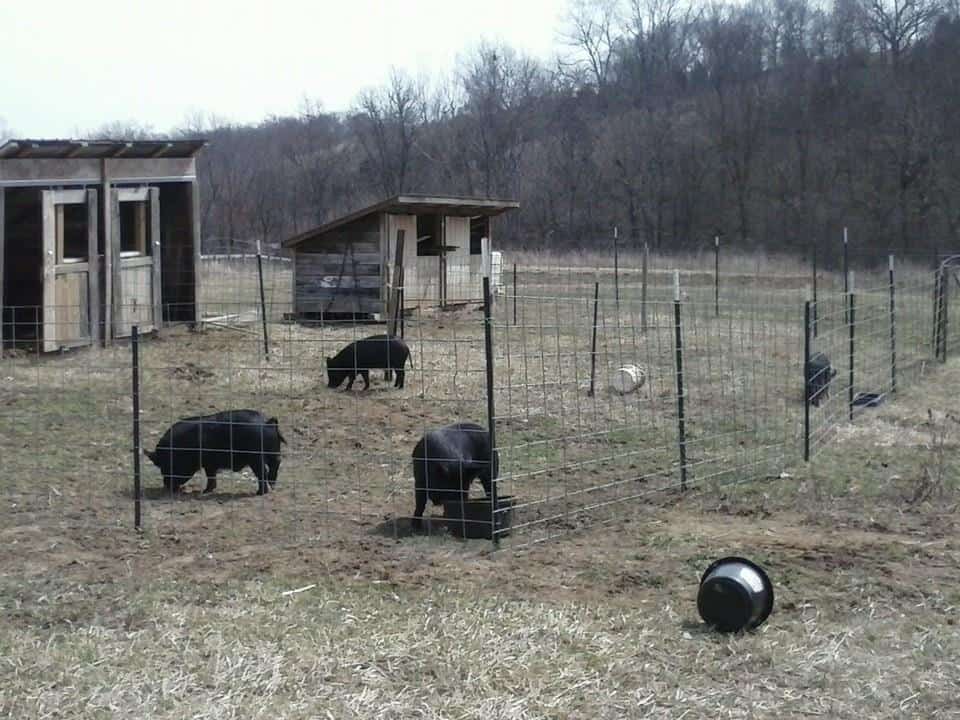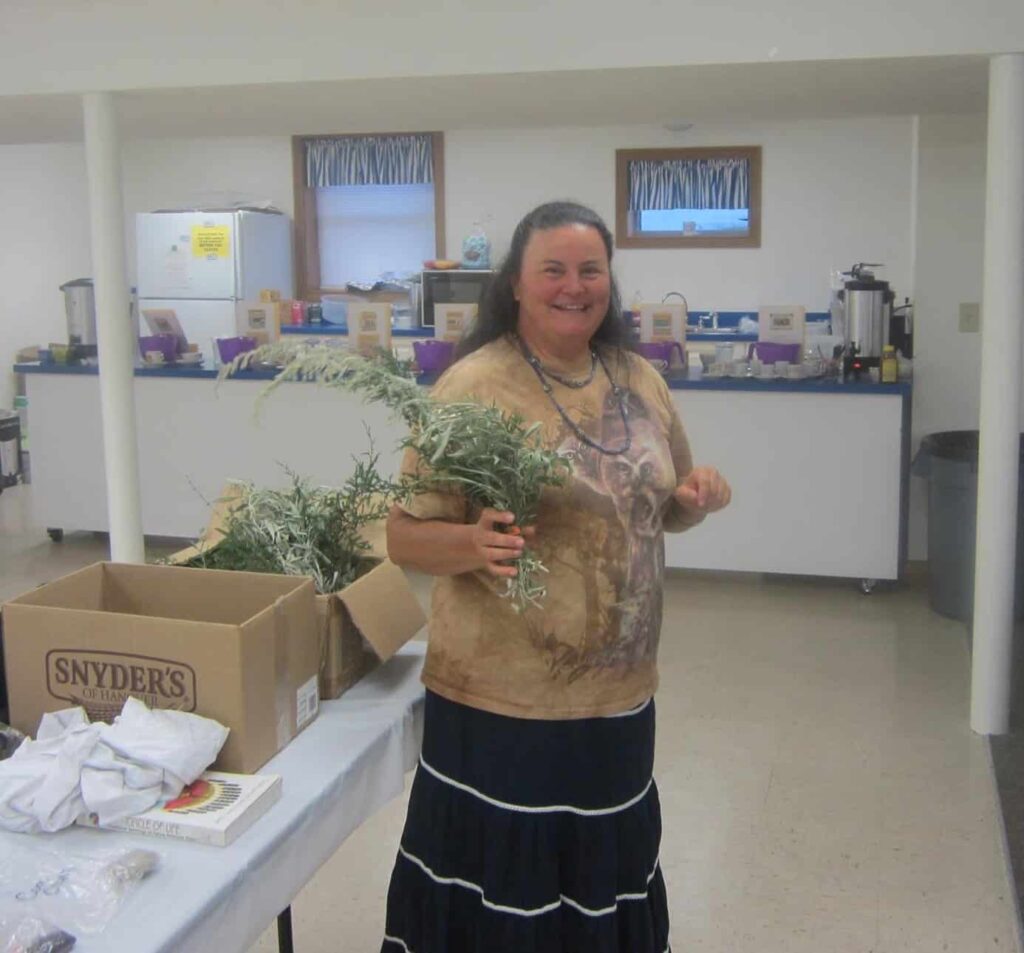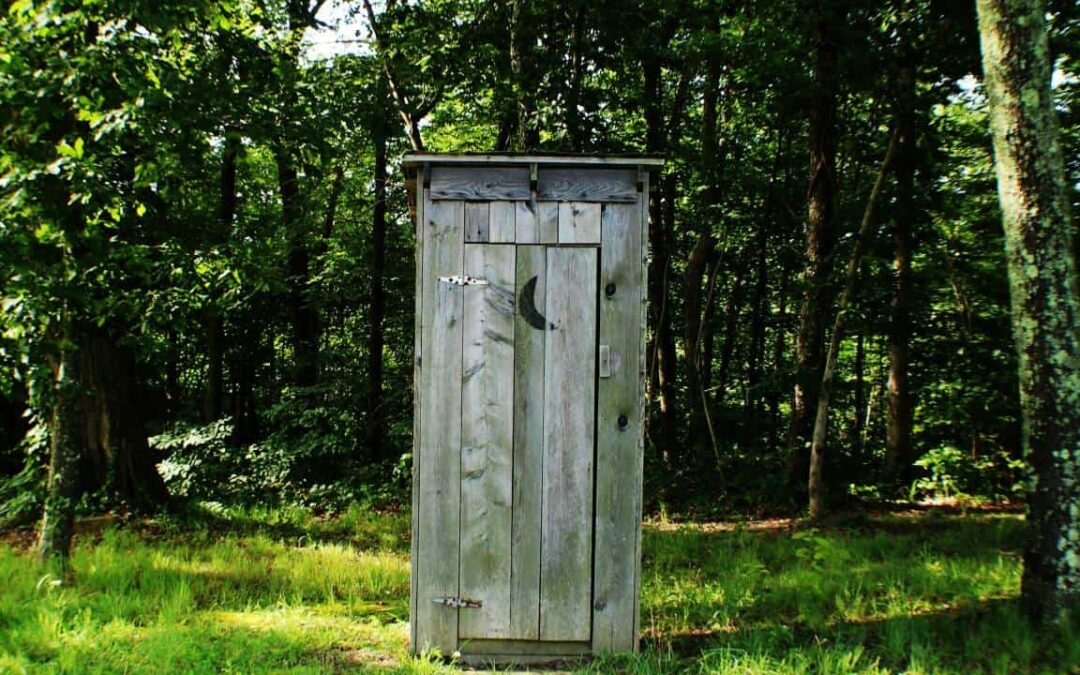Hi! My name is Ame Vanorio. My son and I live off-grid in a small cabin that we built ourselves. I also work towards food self-sufficiency, teach education programs and write about my experiences.
My goal in life is to live as environmentally friendly a life as possible. For me, that means treading lightly on the earth. It’s not a trend and doesn’t focus on one thing, such as avid recycling or having all my trash fit in a mason jar.
Treading lightly on the earth means that I try to make decisions that impact the earth in as minimal a way as possible. Every day, all day. So yes, I am an avid recycler, use alternative energy, garden organically, and have wildlife conservation areas on my farm. But it’s so much more than that…

Authors cabin. Photo Ame Vanorio
A Little Bit More About Me
I have been living an off-grid, sustainable lifestyle since 1993, with the exception of three years when we moved to the city so my eldest son could go to high school. However, my journey to living a zero-waste lifestyle began long before that.
I was raised on a traditional Kentucky farm with horses, tobacco, and cattle. In addition, we had a big garden, a flock of chickens and a hog or two. My family marketed crops and horses in a very conventional way.
The new environmental movement was exciting
However, Ame being Ame tended to want to take things a bit further and step outside the box. It was the 1970’s and the “back to the land movement” was in full swing. Organic farming and environmentalism were front and center. I became enamored with movers and shakers, such as John Seymour, Rachel Carson, and Jane Goodall.
At that time, American farmers were embracing the new chemicals on the market to rid the world (and their crops) of pests. Tractors were getting bigger and confinement farming was gaining traction as a way to raise meat animals economically.
My family had a large garden and my father used plenty of seven dust to kill the bugs. I began reading about organics and became convinced that it was the way to farm.

Fruits of our labor. Photo by Ame Vanorio.
So I spoke up.
I announced to my father that we were doing it all wrong!
“That’s fine,” he said before he told me to get a hoe, because I was now in charge of the garden. He didn’t care about my methods but there better be food on the table. This was fine with me and I was quite happy to be squishing dirt between my toes as I hilled potatoes. Not to mention, this also got me out of housework, a skill my mother said I completely lacked.
This was the start of my journey to live self-sufficiently.
After college and jobs with the Museum of Natural History and the National Wildlife Federation, I decided it was time to buy my own place. I really wanted to put into practice the lifestyle I envied.
So in 1993, I purchased 20 acres of fields and forest. The property was just land, so my eldest son, who was eight, and whatever friends I could enlist, began building a house and a barn. We lived in a tent that the first summer.
Big Changes
I sold that property in 2000 and lived in the city for three years while my eldest son went to high school. Those years in the city were pretty stressful for me and really brought home some of the things about society that I wanted to avoid, such as consumerism, disconnection from nature, and pollution.
Interesting, as with any situation, there was a silver lining. A courtyard. My townhouse had a small courtyard which received full sun. I spent three years in an experiment of how much food I could grow in that small space. I was so successful that I have since taught many classes on urban farming!
When my eldest son graduated high school, my younger son and I moved back to Kentucky. I turned around and bought another place, also just land, and have been there ever since.

My son Caleb, age 9, helping to build our home. Photo: Ame Vanorio
Here are some of the lessons I learned along the way.
Live With Nature Not Against It
Our society basically functions in an anti-environment pattern. Most things that we do to develop as a society actually destroy the environment. Such things as building roads and running electric lines all improve lives for human beings.
Even building such good things as hospitals and schools have an environmental impact.
Building roads kill large swathes of vegetation, disrupts animal movement and increases water pollution. Four years ago they expanded the road between my small town north towards the more urban areas.
It gave me first-hand experience with the changes that happen during road construction.
The premise was good I suppose. Many people from my rural area headed north to the city for work and the road sees a lot of traffic. At that time I was still teaching and I was one of those people as I drove 40 minutes to my school.
However, during the construction, they bulldozed large oak and maple trees and let them fall. They then piled the trees and just burned them. They were just wasted.
I was shocked.
It was spring and I was concerned about the wildlife. What was happening to the baby animals during this time?
A friend of mine and I took to going up after a big bulldoze to look for baby animals that nest may have been destroyed in order to rehabilitate them. Sadly there were many and reuniting techniques often failed because the mother was either too confused to return or died in the mishap.

Little Hope, a red fox kit, in our rehabilitation center at Fox Run Environmental Education Center.
But these things are important for humans, right?
Maybe.
We Are All Connected
As someone of Native American heritage, I grew up hearing the expression “we are all connected.”
At my Catholic high school, I used to wear a button that said: “Honor Your Mother” with a picture of the earth.
Do you ever think about the shape of our planet? It’s a sphere or in 2D, a circle. In a circle, all lines are connected.
Life on this planet has an integrated web and every action we have plays a part on another action.
Our web is part of many webs. For me, it is important to think about how my behavior affects others. And because I may be a bit skewed, I worry about how my actions affect the planet, my animal community, and my farm.
For example, I do not mow my fields on a regular basis. I mow pathways to get to certain places, such as the creek.

Swallowtail butterfly on bull thistle Photo: Ame Vanorio
But what happens when I don’t mow? Field flowers bloom, butterflies come and the deer have a nice place to hide during the day. I have created a natural habitat.
Granted you may not have fields to mow or not to mow. But the decisions you make can have a very positive impact on the land. You may have a small yard but how you treat that yard is very important.
Build Community
I like to joke that when I grow up I am going to be a hermit!
And while I do need quiet time alone in the woods to recharge, I value my time with like-minded people.
So In 1993 when I purchased my first farm and began building a cabin, I was living in rural Ohio near an Amish community. The Amish are a religious group that is well known for living without modern conveniences. They do this so that they are not distracted by things that are not important and keep their focus on God, Faith, and Family.

Three of my interns getting a knitting lesson from one of the other vendors at the farmers market. Photo: Ame Vanorio
So I started going to a local Amish store and asking them things like “ How do you do X without electricity?” I think I totally amused them – this girl who wanted to just live in the backwoods. But the irony was that I ended up working for that Amish family for four years.
My intent was to learn about living off-grid, but what I learned was community is so important.
Find like-minded people that support your goals and give you positive feedback. Real people, not Facebook “friends.”
Where have I met people with similar values as I have? Farmers markets, homeschooling groups, classes I have taken, and the classes I have taught.
Barter
Barter is wonderful. And it has made many things possible for me. I have used barter to gain materials and to gain skills.
Barter brings people together in a way that a sale does not. When I walk into a store and make a purchase, I may chat with the sales clerk or exchange pleasantries when I see someone I know in the store.
Barter, however, has people working together for a common goal. It also fulfills several tenants of the environmental creed. Buy local, recycle, reuse, and support the people around you.
I once spent several weeks helping to tear down an old wooden barn. The barn was falling down and the owners planned to replace it with a metal building. But for my labor, I was given half of the salvageable wood.
I used that wood for many projects. This one was a mobile hog shed.

Movable hog pens. Photo: Ame Vanorio
I was willing to do barn work and house cleaning and I bartered for things like sheep shearing, honey, tires, knitting lessons, and apples. Sometimes I made a few bucks as well, but the real money was in the experiences.
And the circle comes around.
Now that I am pushing being an older person, I teach classes and do consulting onsite and online, and take on volunteers and interns.
Bloom Where You Are Planted
So I have a bit of an obsession with “bumper sticker philosophy.” For the longest time, I had a bumper sticker that said: “Bloom Where You Are Planted.”
When I was in college I spent time protesting nuclear energy and coal plants. I was part of an organization that walked door to door to help people understand the environmental issues of the day. But honestly, I found it all emotionally draining and depressing.
These big issues seemed overwhelming.
I admire people that take on big hot topic issues on a national level. However, for me, I have found that it is best to bloom where I am planted. My big thing is that I try to live by example.
I do what I do because my lifestyle makes a difference – in one small corner of the earth. And if you decide that you want to do something similar in your part of the world, then I totally support you. We are many people in many communities, making a difference to the land and having a positive impact on the earth.
So I focus on issues that are in my community that I feel passionate about: water quality, wildlife conservation, and organic gardening.
I give tours of my “ green” low-cost cabin and explain why it is important to build in an environmentally friendly way.
I think when people experience small spaces and see how comfortable and livable they are, then they understand.

My sons cross country team, planting pumpkins at Fox Run, to raise money for new uniforms. Photo: Ame Vanorio
My sons cross country team planting pumpkins at Fox Run EEC to raise money for new uniforms
What I Know Now
I get asked a lot ‘What are some things you wish you knew going into it?’
I think the biggest lesson I have learned is patience.
Patience with myself, but more so patience with how long things take. I have this “let’s get it done” personality which sometimes conflicts with my reality. Then I get frustrated when things don’t happen on my schedule.
When I started building my cabin, I had a two-year plan to completion. Well, fourteen years later I am still working on the house.
I think when you are starting out on an environmentally-friendly lifestyle, it is important to take baby steps. You should not expect to make all of these changes in a day, a week, or a year. It is a gradual process.
I went into my off-grid lifestyle with two shiny dimes in my pocket. I didn’t have much money and I didn’t have a plan to save for what I needed. So, I began my off-grid lifestyle in the most basic sense of the word – no power.
We lived for two years with no power at all.

Building the cabin – no power tools! Photo: Ame Vanorio
All of the early construction work was done with hand tools. Photo by Ame Vanorio
So my advice to people who want to buy land and build a tiny house is to save money and have a financial plan. Although they save money in the long run, alternative energy and green building materials cost money.
Just Do Your Best
Ok – this cliche is old but the intent is very real. If I’d like to convey anything to you, it’s that every change is a good change. Some will be small, some will be bigger and some will be gradual over time. But you can make a difference and it will matter.
We also all have our nemesis. Those areas we hope to do better with. Mine is trash.
For instance, in my wildlife rehabilitation center, I buy LOTS of formula to feed orphaned and injured babies. Much of the formula comes in this treated cardboard container. You can’t recycle them, they don’t stand up to reuse… they are a pain.
But I obviously can not refuse to buy them because I don’t like the packaging. I have baby animals that are hungry and need food.
What I teach my students is that we must consider the environment in everything we do. However, there are times that it can be very challenging. We must keep trying and searching for ways to improve our lives that have a positive impact on the planet.
I have written to the formula company letting them know I would be interested in different packaging. I’ve taken a step and hope that they will listen. In the meantime, I buy the biggest sizes during my peak season because it saves on packaging and costs.

Relaxing by kayaking on my pond. Photo: Ame Vanorio
Take Away
I have an exceptionally low carbon footprint. But I did not get there overnight. I try to keep growing and pushing my limits. My latest challenge is living in a rural area without public transportation options.
So keep learning, keep working towards a positive relationship with the earth and most of all, take a walk – on the beach, in the woods or even in your neighborhood. You are working to save the Earth so enjoy it!

One of the best decisions I ever made was to put wall to wall bookshelves in every room. Photo: Ame Vanorio
Ame’s First Book Kick the Grocery Store Goodbye is available on Amazon Kindle. She is currently working on her next book – Build a Green, Low Cost, Off-Grid Home for Under $25,000





